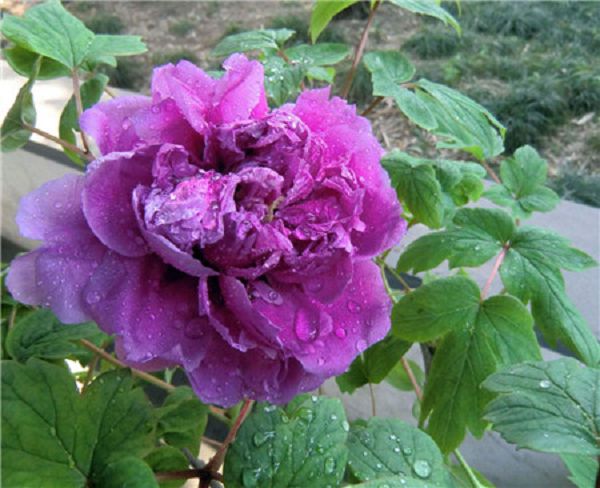Bottling and maintenance of hydroponic flowers
Domesticated hydroponic flowers can be placed in a glass container matched with the planting basket for still water cultivation. The water in the glass container should generally cover 70% of the root length of the water surface, leaving a small amount of root system exposed to the air. When the slow-acting fertilizer needed for plant growth is added to the pot, the plant nutrition slow-release particles with the ratio of N, P and K 30-20-20 (valid for more than half a year) can be used.
① container selection. Pay attention to the size of the container to ensure that the plant has a certain room for elongation and growth. In addition, due to the large number of roots and less water, secreted accumulates quickly make the water turbid, easy to deteriorate and stink at high temperature, and even breed fungi to cause rotten roots, too small containers can not stretch naturally, which also affects the aesthetics of the works. From the aesthetic point of view, the ratio of root space to reserved space is the best at the golden section point, which is 4:6.
② bottling operation. The roots of the plants induced by hydroponic culture are mostly white and tender aquatic roots. Be careful when operating on the bottle, so as to prevent mechanical injury from causing rotten roots and thus affecting growth. Usually, planting cups or baskets are used during induction. After mutagenesis, there is no need to replant the cup, move as little as possible, and carefully cover the planting cup or basket in the container or vase directly, and then comb the root system to allow it to stretch freely. Note that 4:6 is the best ratio between the exposed root part and the root soaking part.
Daily maintenance of ③.
Scientific placement: hydroponic flowers and soil flowers are different, the root system can not have direct light, otherwise it will inhibit the root system or root photooxidation injury, resulting in root blackening, serious root system will rot and lose activity. Indoor foliage plants are generally placed in home environments such as desks, coffee tables, halls, computers, kitchens and dining tables, while Xiyang plants are placed in front of balcony windows with better transmittance but no direct light.
Change water regularly: when changing water, remove the plant and gently put it aside, then pour fresh water into the bottle or container, add it to the standard golden section water level, drop a few drops of special care solution for hydroponic flowers, and finally put back the plant to comb its roots. If some roots are found to be too long, they can be pruned properly, and some overgrown roots, blackened aging roots and rotten roots can be trimmed once, which is beneficial to the stimulation cycle of roots and the formation of new roots.
Pest control: although there are few indoor diseases and insect pests, but sometimes due to adverse environment caused by some plant leaf spot disease and red spider harm. In the family maintenance environment, chemical pesticide control should not be used. Washing powder water, pepper water and garlic juice can be used to prevent red spiders. Acetic acid or detergent can inhibit bacteria, and spraying leaves with beer liquid can strengthen seedlings.
Rejuvenation measures: plants that have been in low light for a long time will have an impact on their growth, but if they are directly maintained under direct light, they will hurt the roots. Therefore, black cloth can be wrapped around the roots to prevent direct damage to the roots, and then placed on the balcony for a period of time. During the maintenance period, some weak branches, light and inefficient branches can be pruned properly, and then the nutrient solution can be poured into the planting cup or basket to restore their growth for a period of time and then moved into the indoor maintenance.
Related
- What if the leaves of potted flowers turn yellow?
- Florescence Control of several Flowers
- Anti-freezing technology and post-freezing nursing technology of flowers
- What is the classification of flowers? What are the common methods of flower classification?
- Prevention and control of alkali and acid damage of flowers in courtyard
- Technology of Anti-freezing and restoring growth of Flower seedlings in greenhouse and greenhouse
- How does flower fertilization not hurt the root? Fertilization technology of flowers
- Key points of disinfection in flower greenhouse
- Several pesticides that are banned or used cautiously in flowers
- How to fertilize the flowers that watch the leaves?



